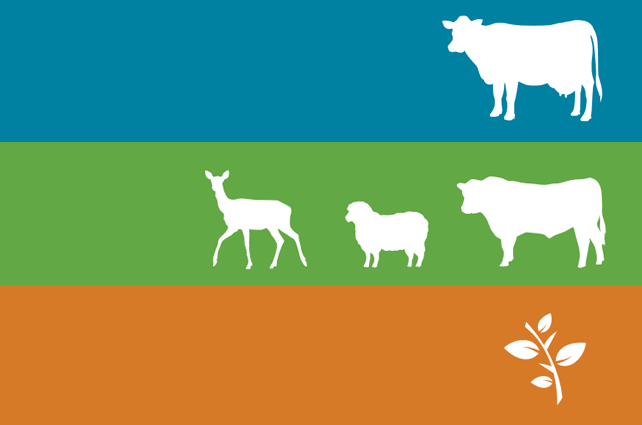Farm Menus
The Farm Menus have been developed by Waikato Regional Council and industry. They provide a range of practices for dairy, drystock and cropping farms to improve nutrient management and reduce impacts on water quality.
The menus are designed to help identify the best options for individual circumstances. The practices listed are generally a step ahead of current regulatory expectations. They will also help farmers to better meet future sustainability challenges.
How to use the menus
 The dairy menu should be used together with a farm management team and consultant to support current industry initiatives, such as the Upper Waikato Sustainable Milk Project, Waipa Sustainable Milk Project and the Sustainable Dairying: Water Accord.
The dairy menu should be used together with a farm management team and consultant to support current industry initiatives, such as the Upper Waikato Sustainable Milk Project, Waipa Sustainable Milk Project and the Sustainable Dairying: Water Accord.
The drystock menu should be used in conjunction with your consultant or your Land Environment Plan.
The cropping menu is designed to support current industry initiatives, such as the work of the Foundation for Arable Research (FAR) and Horticulture New Zealand. The arable industry standard is the Farm Environment Template and Guidelines for Arable Enterprises and HortNZ is currently using the Good Agricultural Practices.
The starting point for using these menus is a nutrient budget and a farm system analysis, which looks at farm goals, management approaches and feed supply. These tools will help identify the water quality improvement practices that best fit an individual farm, taking into account flow on effects on feed budgets and other farm policies. Looking at the big picture will help ensure changes in one area do not create deficits or unbudgeted costs in another.
You can use the menus to identify practices that may be suitable for your farm by sorting practices from highest to lowest (or vice versa) in terms of:
- water quality benefit (reducing nitrogen, phosphorus, sediment or micro-organisms)
- potential cost and economic benefit to the farm business
Links are include to videos and other sites for more information. You can also copy and paste any part of the menu into your environmental farm plan.
Each practice's effectiveness at reducing nitrogen, phosphorus, sediment and micro-organisms entering waterways is rated, based on the latest research. The cost and benefit of each practice on the farm business are also indicated.
Select a menu option, below, that is relevant to your farm practice.
Screen time
Sit back and watch! We've put together a few vid clips for more information and help, and maybe some entertainment.
Managing and retiring bogs and swamps
Planting poplars and poles on steep country
Land Environment Plans (LEPs)
